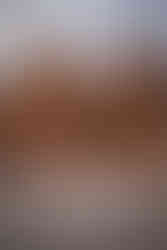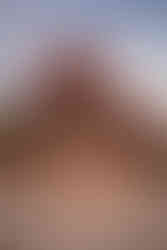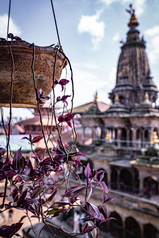The Royal Squares Frozen in Time
- Nemisha Singh

- Nov 24, 2022
- 5 min read
Updated: Apr 30, 2024
Everything You Need to Know About the Nepali Durbar Squares
In this mini blog post, I would like to introduce you three spectacular squares located in the Kathmandu valley.

In the past, the Kathmandu Valley was formed of three cities. They are Kasthamandap Mahanagar, Lalitpur and Bhaktapur. Over centuries, these cities were reigned by the Licchavi, Mallas, Shahs and Gorkhas dynasties that have left behind some extraordinary architecture. The most significant ones being the artistic Durbar Squares. Durbar Square means a royal square. Many of the world’s great cities have famous squares that give the cities their essence. For the Kathmandu valley, it’s the Durbar Squares that reflect its art, religion, culture and rituals. If you want to see the real Nepal, then visit its royal Durbar Squares that will amaze you with monuments frozen in time. These royal squares are one of the seven UNESCO World Heritage Sites of the Kathmandu Valley. Each square requires an entrance ticket. With the ticket, you’ll receive a map marked with all important locations including their significance. In each square, you can hire guides at reasonable prices who can help you around.
So, get ready to immerse yourself in the hustle and bustle of the royal squares and explore some of the most beautiful architectures !

Jump Ahead
Best time to visit Kathmandu
The best time to visit Kathmandu is from September to November. Temperatures during this period are generally mild which is ideal for outdoor activities. As I was there in October, it rained on multiple occasions, but only for a few hours on a day thus not ruining my excursion plans. On some days, skies were so clear that I could easily spot the mountain peaks right out of my hotel window in Thamel. Since late autumn is a dry season, the city gets crowded by international tourists who visit Nepal to experience Himalayan trekking.

The Royal squares of the Kathmandu Valley
The Durbar Squares boast spectacular architecture. The unbeatable skills of the Newar artists and craftsmen come to life here. There are palaces, quadrangles, courtyards, pagodas, temples and idols. Many monuments have undergone reconstruction for damages caused by natural calamities or neglect. The Durbar Squares of the Kathmandu valley are called Basantapur (or Kathmandu) Durbar Square, Patan (or Lalitpur) Durbar Square and Bhaktapur Durbar Square. The Durbar Squares are free of car traffic. What you must remember is that the entrance fee for a royal square is cheaper for a SAARC national than for a non-SAARC national. There it’s not uncommon to be approached by tourist guides. Since presence of several monuments at one place might overwhelm you, you might want to hire a guide. But if you don't, then make sure to fully use the map that you receive with the ticket as the map is marked with all important buildings. The tourist guides in Nepal can communicate very well in English and Hindi. Two languages officially spoken in the region are Newar and Nepali (by the way, Newar is an official language also spoken in Sikkim, India).

Basantapur Durbar Square
The courtyard of Basantapur Durbar Square houses many Newari buildings dedicated to Hindu as well as Buddhist religions. It is said that the name Kathmandu is most likely derived from a temple called Kasthamandap also located in this Durbar Square. The temple was completely destroyed by the earthquake of April 2015, but has been reconstructed after the calamity. The word Kastha means wood and the word Mandapa means a pavilion. Legends say that all the wood used to build it was obtained from a single tree. Some of the other famous spots that you should not miss in this square are the Taleju Bhawani Temple and the Hanuman Dhoka Durbar Museum. Do not forget to buy souvenirs from the local bazaar of jewelry and handicraft located on the historic freak street. A popular spot of the Kathmandu Durbar Square is the Kumari Ghar. They say a Kumari is a living goddess. Small local girls have to go through an ancient selection process and posses 32 godly qualities before one can be chosen as the Hindu mother goddess, Durga. She has several devotees and takes a tour of the city during the festival of Indra Jatra on her chariot. We got a glimpse of her for a few seconds as she waved at us from her balcony on our visit.

Patan Durbar Square
Many call Patan (also known as Lalitpur) as the twin city of Kathmandu. The Patan Durbar Square is the oldest of the three royal squares. It was heavily damaged by the earthquake in April 2015. However, many of the buildings have been restored since then, thanks to tourism and donations. The locations that you must add to your bucket list are the Golden Temple, Mahabouddha Bahal and the Kumbhesvara Temple. My favourite one is the exquisite Hindu Shikhara-style Krishna Temple that I photographed from various angles. It is made of stone in its entirety and is a proof of a flourishing Malla era. Buddhism is prevalent in Patan and was brought here by the Indian King Asoka who built many stupas in the square. The ancient Royal Patan Palace of the Malla Kings has three beautiful courtyards called the Mul Chowk, Sundari Chowk and Keshav Narayan Chowk. Take a pleasant stroll through the square and then try some of best Newari dishes that many eateries nearby have to offer. Personally, I felt Patan had the best shops for home adornments.

Bhaktapur Durbar Square
Before Kathmandu, Bhaktapur was the old capital of the valley. The city is dominated by the Newar peoples and is the hub of the Newar culture and dishes. The main language spoken is also Newar. Some places of interest are the Royal Palace of Bhaktapur, Bhairavnath Temple, Dattatraya Temple and the Nyatapola Temple. The Nyatapola is the most beautiful monument of Bhaktapur and is located in the Taumadhi Square on a five-level podium. The Nyatapola Temple is the tallest temple in Bhaktapur as well as the tallest in Nepal. It is known to have survived many major earthquakes. The Newari culture is celebrated in Bhaktapur and the Newari food is the city's treasure. A local yoghurt called Dhau is a must-try. If you like handicrafts especially pottery, then Bhaktapur will not disappoint you. You will get to shop the best thanka paintings, wooden souvenirs, exquisite clay masks and metal hanging panas. If you have some time, then do indulge in some shanti bowl therapy to get your chakras cleansed.

Summary
A secret tip from me would be to catch a glimpse of life in the Durbar Squares from a terrace. Many eateries of the Durbar Squares which will allow you to enjoy views from their rooftops. I often visited a mini cafe or a local food joint located on top of a building from where I could capture the stunning buildings in my camera. Excellent city views, finger-licking Newari and Nepali foods, welcoming localities and romantic October climate, what else could one ask for ? I am grateful for this opportunity to have witnessed one of the finest architectures of the Indo-Aryan belt. I hope I was able to enlighten you with what the Kathmandu valley has to offer through my mini blog post. I will catch you in my next series of travels around the globe. Till then enjoy my royal photo gallery below.
Drop your comments or questions if any. Pin this post if you think I inspired you for your next travels.



















































Comments